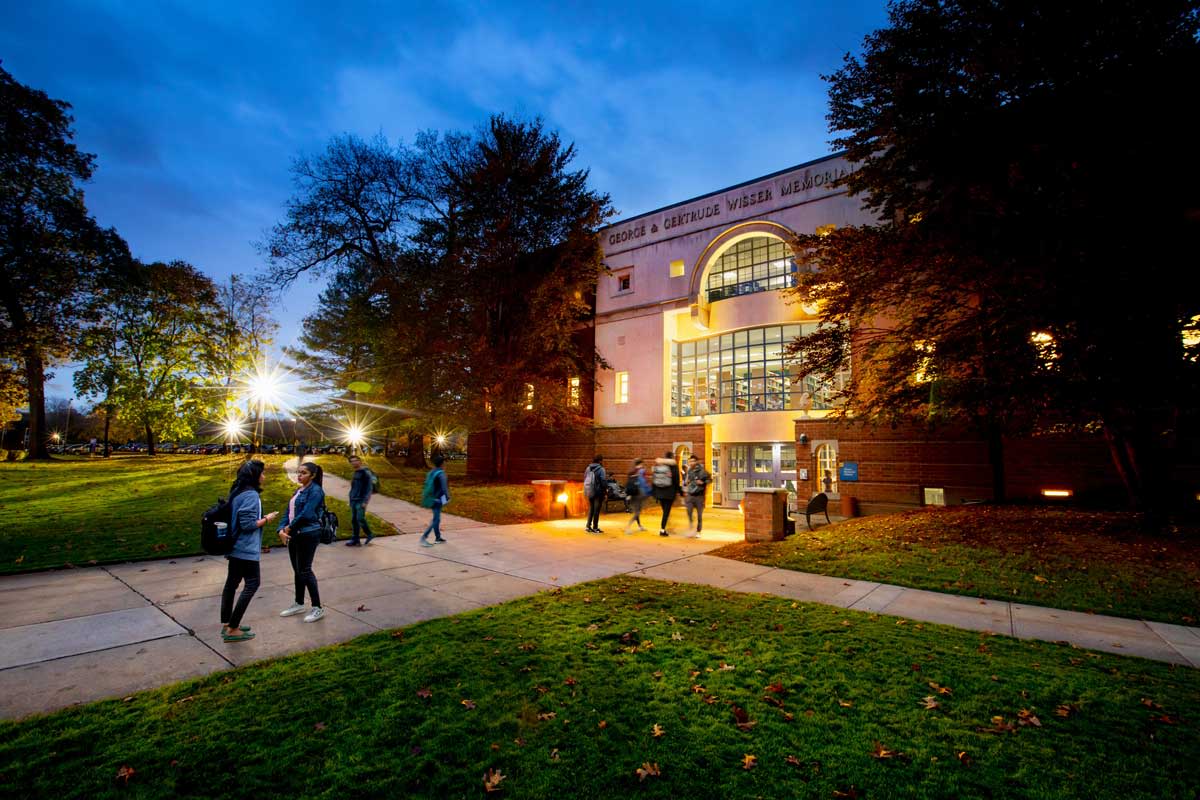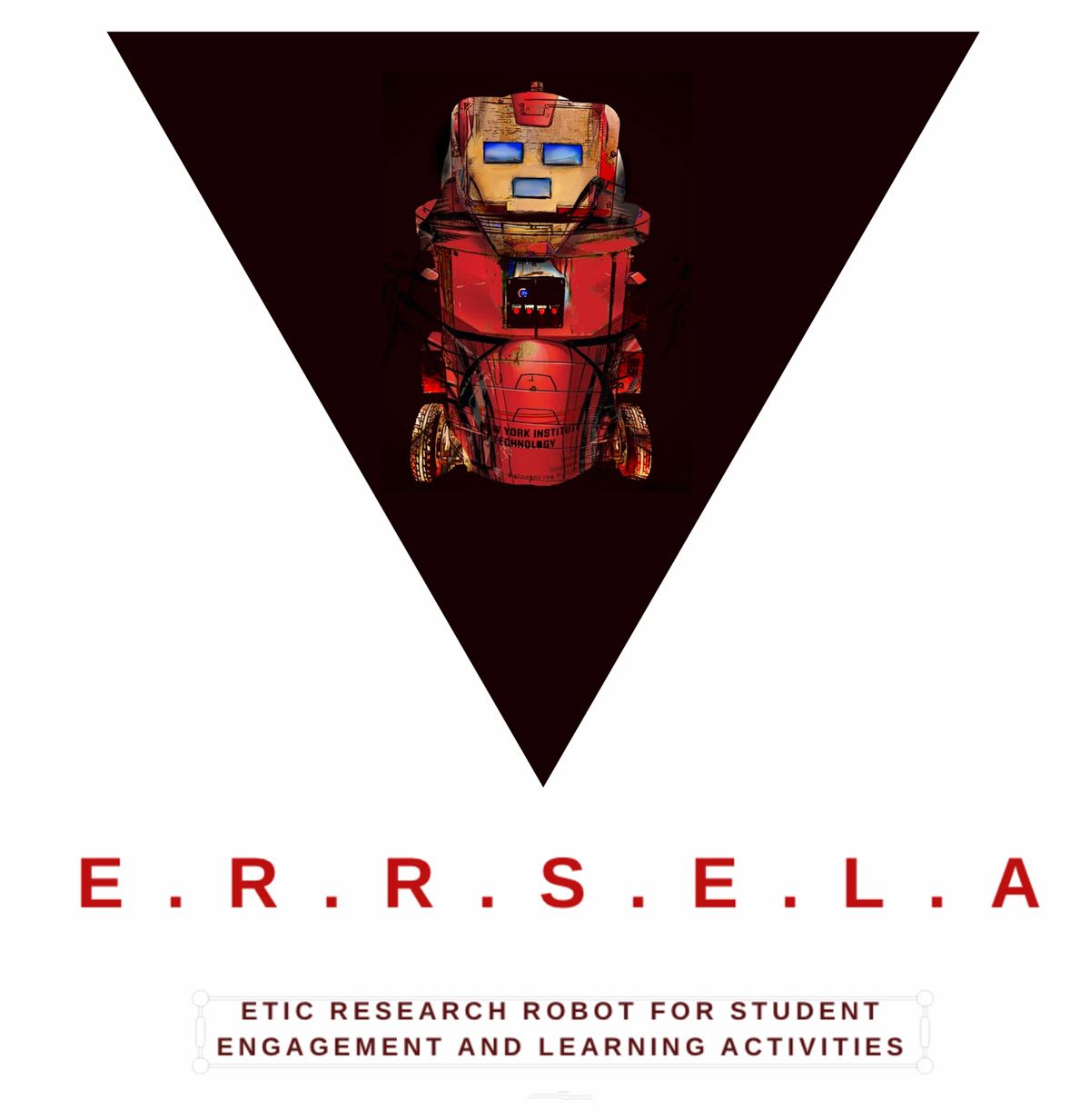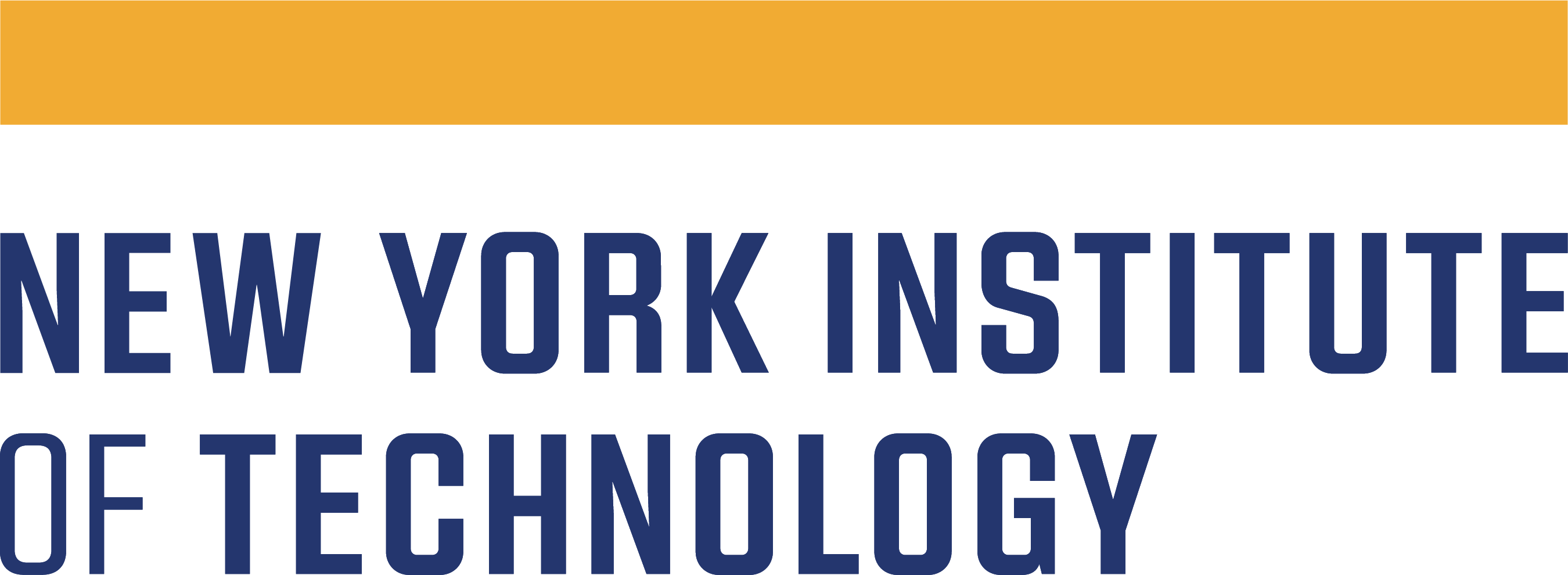This Robot Promotes Hands-On Learning During COVID-19
New York Tech’s E.R.R.S.E.L.A. robot has served double duty as a research
and high school outreach tool before and during the pandemic…
and even played a starring role at this year’s commencement.

It’s only been a year since Michael Nizich, Ph.D., director of New York Institute of Technology’s Entrepreneurship and Technology Innovation Center (ETIC), turned his vision for a collaborative research and engagement program into reality with E.R.R.S.E.L.A.TM (ETIC Research Robot for Student Engagement and Learning Activities). And what a year it’s been.
E.R.R.S.E.L.A. is not just a robot—who can speak, play music and answer questions—but a philosophy. It was deliberately designed to engage students at their individual levels of experience and in their areas of interest. In a relatively short time, E.R.R.S.E.L.A.—both the robot and the program named on its behalf—has indeed demonstrated how technology and innovation can promote engagement, even at a distance and despite social isolation. This was possible because Nizich developed an application programming interface (API) that allows students, faculty, or teams to add design elements, capabilities, and software intelligence to E.R.R.S.E.L.A. from any location—a classroom across campus, a student’s home computer, or even a local high school lab—regardless of their discipline, major field of study or skill level.
Alex Vazquez-Zavala, a computer science major from Westbury, N.Y., was among the first students to participate, configuring electronics and code for the robotic arms, which can lift up to 100 pounds. “I’m new to Python, so I’ve been learning as I go,” he says. “Working in phases makes it simpler. You need to make the arm move, so you do the research and make the arms move. Then you add the next step. This keeps building and making the robot better.”
Virtual Successes
In fall 2019 and the beginning of the spring 2020 semester, more than 30 New York Tech students worked with E.R.R.S.E.L.A., contributing to its design and functionality. Then came COVID-19. While many research programs disbanded, E.R.R.S.E.L.A.’s remote capabilities allowed students to continue their “hands-on” research at a time when distance learning became the norm.
In April, Nizich launched the iNTEREST program, twice-weekly Zoom seminars to help train new and current participants in skills related to the project, from developing software and web applications to creating databases.
E.R.R.S.E.L.A. also joined New York Tech’s first virtual STEAM Outreach Happy Hour, an initiative in late April to increase collaboration among faculty, staff, and students working on projects engaging local communities. More than a dozen students and faculty enjoyed an overview by Nizich followed by a robust exchange of ideas for expanding the program.
And in June, E.R.R.S.E.L.A. played a starring role in commencement, opening the College of Engineering and Computing Sciences virtual graduation ceremony and welcoming the Class of 2020, faculty and guests from the ETIC labs.

E.R.R.S.E.L.A. will undergo a makeover this summer, thanks to a New York Tech design student who signed on to the project. Credit: Mariana Marques
E.R.R.S.E.L.A. will undergo a makeover this summer, thanks to a New York Tech design student who signed on to the project. Credit: Mariana Marques
E.R.R.S.E.L.A. opens the commencement ceremony for New York Tech's College of Engineering and Computing Sciences. Credit: Michael Nizich, New York Institute of Technology
E.R.R.S.E.L.A. opens the commencement ceremony for New York Tech's College of Engineering and Computing Sciences. Credit: Michael Nizich, New York Institute of Technology
Connecting with Future Students — and Maybe Even Patients
Prior to COVID-19, E.R.R.S.E.L.A. was accessed by high school students on Long Island as well as students at colleges such as Wesleyan, Yeshiva and Cornell. Since the implementation of social distancing, Nizich reports an uptick in requests from high school teachers wanting sessions for their online classrooms.
At the high school level, he notes, E.R.R.S.E.L.A. is a great way to attract students to computer science and engineering. “Yes, we expose them to New York Tech, but the real point is to get them thinking they could do this as a career,” he says. “Students participate under the advisement of ETIC staff and faculty and receive guidance and training as they create and implement their ERRSELA technology,” says Nizich.
Another current focal point for the project, which began pre-COVID-19, is developing applications to ultilize E.R.R.S.E.L.A. in health care settings—for functions such as pushing a wheelchair or delivering medication in a hospital environment. “We have an intellectual property program and are starting to file provisional patents,” says Nizich. In addition to real-life industry projects, Nizich maintains ongoing internal ETIC projects so that interested students always have an opportunity to get involved.
“These uncertain times have provided us with the unique opportunity to transcend our traditional areas of expertise and coalesce around larger community-based initiatives,” says Babak Beheshti, Ph.D., dean of the College of Engineering and Computing Sciences. “This inherently multidisciplinary initiative around our robotics platform is precisely one that addresses this opportunity.”
Connecting with Future Students — and Maybe Even Patients
Prior to COVID-19, E.R.R.S.E.L.A. was accessed by high school students on Long Island as well as students at colleges such as Wesleyan, Yeshiva and Cornell. Since the implementation of social distancing, Nizich reports an uptick in requests from high school teachers wanting sessions for their online classrooms.
At the high school level, he notes, E.R.R.S.E.L.A. is a great way to attract students to computer science and engineering. “Yes, we expose them to New York Tech, but the real point is to get them thinking they could do this as a career,” he says. “Students participate under the advisement of ETIC staff and faculty and receive guidance and training as they create and implement their ERRSELA technology,” says Nizich.
Another current focal point for the project, which began pre-COVID-19, is developing applications to ultilize E.R.R.S.E.L.A. in health care settings—for functions such as pushing a wheelchair or delivering medication in a hospital environment. “We have an intellectual property program and are starting to file provisional patents,” says Nizich. In addition to real-life industry projects, Nizich maintains ongoing internal ETIC projects so that interested students always have an opportunity to get involved.
“These uncertain times have provided us with the unique opportunity to transcend our traditional areas of expertise and coalesce around larger community-based initiatives,” says Babak Beheshti, Ph.D., dean of the College of Engineering and Computing Sciences. “This inherently multidisciplinary initiative around our robotics platform is precisely one that addresses this opportunity.”
What’s Next: A Robot Makeover
While E.R.R.S.E.L.A. has kept its stride during the pandemic, there’s plenty more to come and the robot’s popularity among current students continues to grow. In early June, Nizich began a summer program for students and recent graduates with majors in computer science, electrical and computer engineering, mechanical engineering and graphic design.
“New York Tech graphic design student Mariana Marques is taking images of the current E.R.R.S.E.L.A. and imagining what it could look like with some body changes and a paint job that our mechanical engineering students can work on,” says Nizich, who expects the makeover to be complete in time for the fall semester. “This is a great example of putting the ‘A’ (art) in STEM and moving toward STEAM!”
Find out more about the exciting things happening at New York Institute of Technology: nyit.edu.
This content was paid for by New York Institute of Technology and produced by Inside Higher Ed's sponsored content team. The editorial staff of Inside Higher Ed had no role in its preparation.


